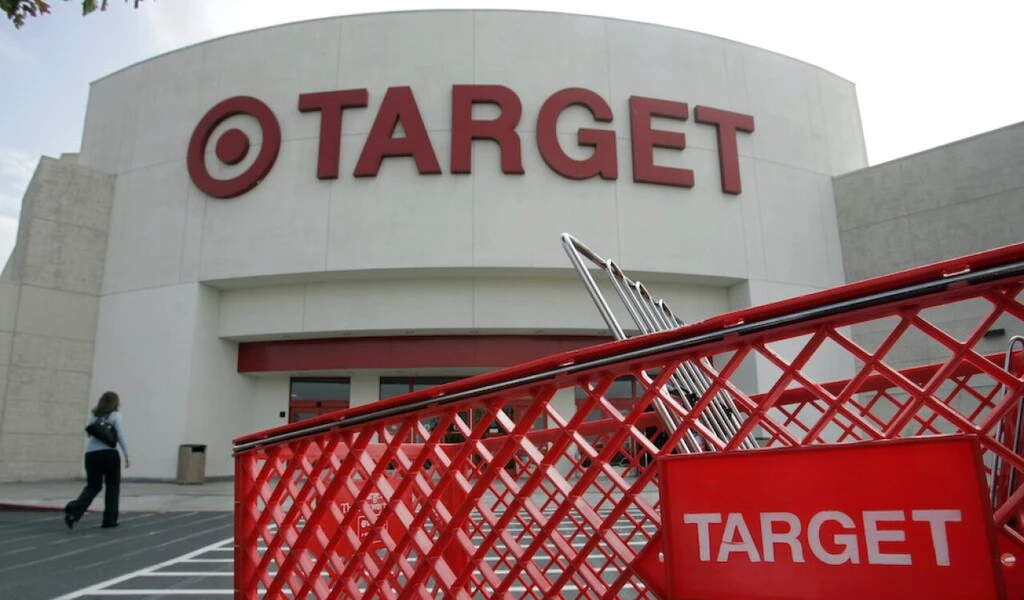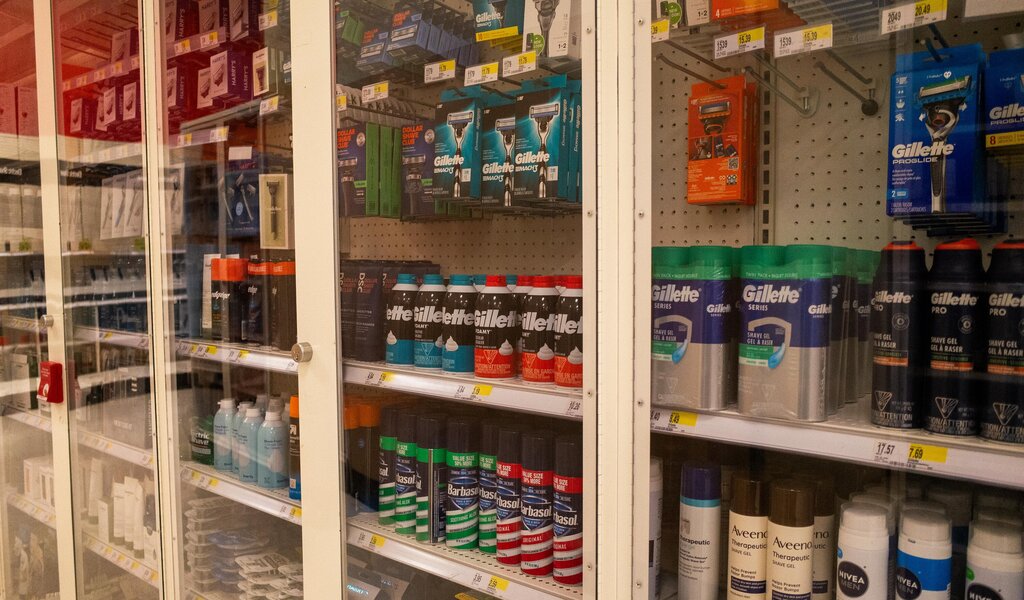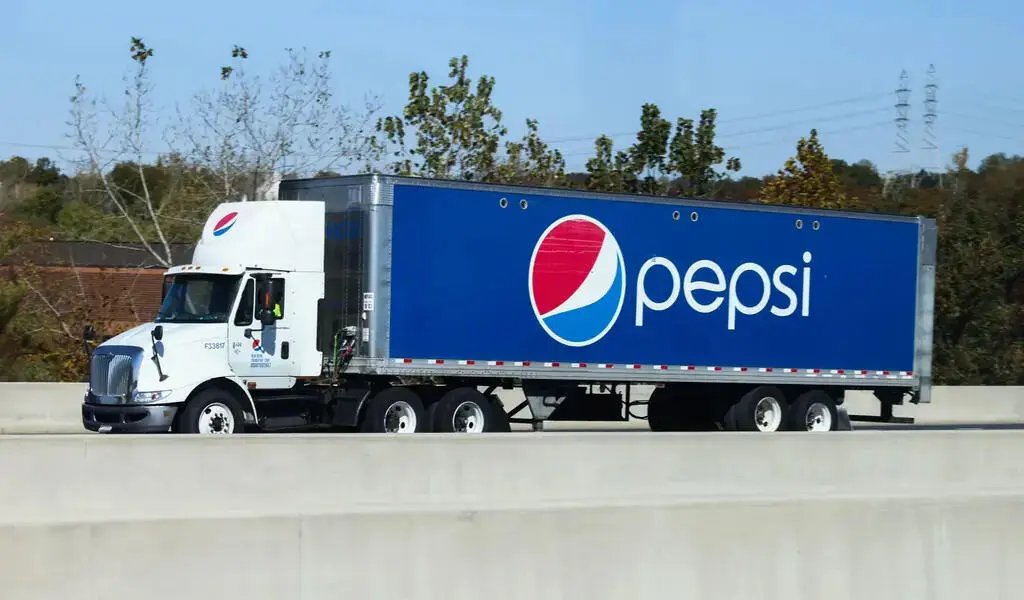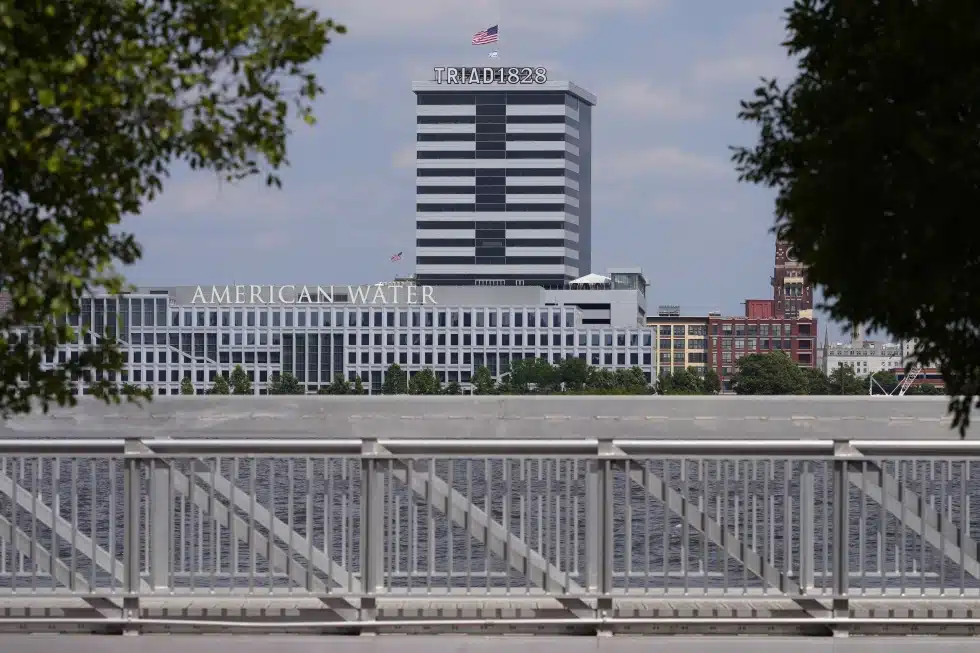Business
Target Announces Closure of 9 Stores Across Four States Citing Rising Theft And Safety Concerns

(CTN NEWS) – Target’s closure of nine stores in major cities, attributed to ongoing large-scale theft incidents, serves as the latest indicator of retailers grappling with an escalating and perilous issue.
According to industry experts, even a minor uptick in criminal activity can trigger far-reaching consequences that compel retailers to shutter their establishments.
“It unequivocally demonstrates that store-related crimes have elevated to a new echelon,” affirmed Burt Flickinger, a retail specialist and the managing director of Strategic Resource Group, a retail consultancy firm.
Nonetheless, store crime represents merely one facet of a complex set of challenges confronting retailers. They also face issues such as a downturn in consumer spending and surplus inventory as they strive to boost in-store sales and make determinations regarding which stores to close.
Given the slim profit margins that many large retailers traditionally operate within, stolen goods can exert a disproportionately significant impact on store profitability.
“Increasing instances of store crime constitute an additional variable currently affecting retailers,” noted Zak Stambor, a senior analyst specializing in retail and e-commerce at Insider Intelligence.

Rising Concerns Over Organized Retail Crime: Smash-and-Grab Incidents and Their Impact
The focal point of concern revolves around a specific category of store theft categorized as “organized retail crime” or ORC.
Unlike opportunistic thefts where individuals grab a few necessities like baby formula or food, ORC is a more insidious and financially burdensome issue, as reported by both companies and law enforcement.
ORC theft entails coordinated groups targeting stores that stock high-value items such as electronics, sporting goods, cosmetics, clothing, handbags, and shoes.
These groups pilfer substantial quantities of products and subsequently resell them through secondary marketplaces like eBay, OfferUp, Facebook Marketplace, or even reintegrate them into the legitimate supply chain, according to law enforcement sources.
Over the past year, shopping malls and upscale stores in major cities like Los Angeles, Chicago, and New York have experienced a rash of perilous smash-and-grab attacks.
Perpetrators employ sledgehammers and other tools to forcibly break into stores, making off with thousands of dollars’ worth of merchandise.
Small businesses are equally vulnerable to these threats.
For instance, on Wednesday, the Pennsylvania Liquor Control Board was compelled to shut down 49 retail wine and liquor stores, with 48 of them located in Philadelphia, following a spree of overnight looting.
According to police reports, 52 individuals, including three juveniles, were arrested and are now facing burglary and theft charges, as confirmed by Jane Roh, a spokeswoman for the Philadelphia District Attorney’s Office.
Shawn Kelly, the press secretary for the Pennsylvania Liquor Control Board, stated, “Today, all FW&GS stores in Philadelphia and one in Cheltenham Plaza, Wyncote, Montgomery County, are closed in the interest of employee safety and while we assess the damage and loss that occurred.
We will reopen stores when it is safe to do so and when the damage is repaired.
It is too early to tell how much was damaged or destroyed.”
In recent weeks, several prominent retail chains have issued warnings about the gravity of this problem, both in terms of the safety of their customers and employees and the potential erosion of profits for the year.

Retailers Grapple with Escalating Theft Trends: Impact on Profits and Safety Concerns
Last month, Dick’s Sporting Goods cautioned that retail theft was adversely affecting its business and would result in lower annual profits.
Discount retailers like Five Below and Dollar General, as well as TJX Companies (owner of TJ Maxx, Home Goods, and Marshalls), also sounded the alarm regarding the escalating theft incidents at their stores.
Nordstrom, Whole Foods, and certain other major chains have indicated their withdrawal from San Francisco due to shifting economic conditions or concerns over employee safety. Numerous other retailers have attributed store closures to rising crime rates.
“When you have numerous retailers all pointing to store theft and echoing the same concerns, it becomes evident that a troubling trend is taking hold,” remarked Stambor. “Target, in particular, has been a leading voice in highlighting the issue of store crime.”
Target, with nearly 2,000 stores across the United States, announced in May that it anticipated a $500 million loss this year due to the mounting theft problem.
“Retailers are facing a daunting battle to combat crime.
Predominantly, they are also deeply concerned about safety within their stores and retaining quality employees,” emphasized Read Hayes, a criminologist at the University of Florida and the director of the Loss Prevention Research Council, an organization with members including major retailers such as Walmart, Target, Home Depot, and Gap.
Challenges in Quantifying Retail Crime: Impact on Shrinkage Rates and Financial Consequences
The impetus for a surge in retail crime incidents often stems from a combination of opportunities and necessity, according to experts. Nevertheless, accurately quantifying the scale of this issue remains challenging.
In 2022, the industry’s estimation of total annual shrinkage, a term encompassing merchandise disappearance resulting from external and internal theft, fraud, damage, and other factors, indicated losses of $112.1 billion for retailers, up from $93.9 billion in 2021.
The National Retail Federation reported that the average shrinkage rate in 2022 rose to 1.6%, compared to 1.4% in the previous year.
As Zak Stambor pointed out, “For individual retailers, we can’t access detailed data to assess how crime is impacting sales at the store level.”
As a case in point, Target did not disclose theft data for the stores slated for closure.
Nonetheless, Burt Flickinger postulates that recurrent instances of large-scale theft can have significant financial repercussions.
“For instance, when $300 to $330 worth of merchandise is stolen, typically only $0.00 to $3 is recovered,” he explained.
“Consequently, considering an average of $300 worth of stolen, unrecovered goods and a retailer’s after-tax retail profit of one cent for every dollar of sales, the retailer must sell an additional $30,000 worth of merchandise to offset the $300 lost to theft.”
Over time, the affected store’s sales performance deteriorates, forcing the retailer to either rely on other stores in its portfolio to compensate for the losses due to theft or to make the difficult decision to close the store.

Tracking Retail Crime and Store Closures
In the meantime, Hayes and his team are in the process of developing a heatmap that tracks reported incidents of retail crime reported to law enforcement, along with corresponding store closures in those affected areas.
“Reported instances of store crimes are on the rise, with the most concentrated clusters occurring in urban areas, as well as a shift away from urban locations,” he noted.
Hayes emphasizes that the broader consequences of store closures due to crime should not be underestimated. He likens it to the ripples created when a pebble is thrown into water.
If a major anchor store within a mall decides to leave, it reduces foot traffic to the mall, leading other stores to follow suit.
Over time, this can result in abandoned buildings, urban blight, and an increase in other forms of criminal activity. “Store closures set off a chain reaction of concerns,” he stated.
To enhance store security, retailers are implementing various measures, such as securing products in cases or modifying store layouts. However, these measures may inadvertently deter shoppers.
For instance, Walgreens recently introduced a prototype store in Chicago featuring just two aisles, with most products kept out of sight.
“This adds another layer of complexity to an already intricate situation,” noted Stambor. “Retailers are taking these steps to combat theft, but in doing so, they are creating obstacles to increasing sales.
When customers walk into a store and find essential products locked up, it may ultimately drive those who have no intention of stealing to shop elsewhere, either in physical stores or online.”
RELATED CTN NEWS:
Hyundai And Kia Recall Nearly 3.4 Million Vehicles In The U.S. Due To Fire Risk
Alibaba Announces Plan To List Logistics Unit Cainiao On Hong Kong Stock Exchange

Business
PepsiCo Reduces Revenue Projections As North American Snacks And Key International Markets Underperform.

(VOR News) – In the third quarter of this year, Pepsi’s net income was $2.93 billion, which is equivalent to $2.13 per share. This was attributed to the company.
This is in stark contrast to net income of $3.09 billion, which is equivalent to $2.24 per share, during the same period in the previous year. The company’s earnings per share were $2.31 when expenses were excluded.
Net sales decreased by 0.6%, totaling $23.32 billion. Organic sales increased by 1.3% during the quarter when the effects of acquisitions, divestitures, and currency changes are excluded.
Pepsi’s beverage sales fell this quarter.
The most recent report indicates that the beverage and food sectors of the organization experienced a 2% decline in volume. Consumers of all income levels are demonstrating a change in their purchasing habits, as indicated by CEOs’ statements from the previous quarter.
Pepsi’s entire volume was adversely affected by the lackluster demand they encountered in North America. An increasing number of Americans are becoming more frugal, reducing the number of snacks they ingest, and reducing the number of times they purchase at convenience stores.
Furthermore, Laguarta observed that the increase in sales was partially attributed to the election that occurred in Mexico during the month of June.
The most significant decrease in volume was experienced by Quaker Foods North America, which was 13%. In December, the company announced its initial recall in response to a potential salmonella infection.
Due to the probability of an illness, the recall was extended in January. Pepsi officially closed a plant that was implicated in the recalls in June, despite the fact that manufacturing had already been halted.
Jamie Caulfield, the Chief Financial Officer of Pepsi and Laguarta, has indicated that the recalls are beginning to have a lessening effect.
Frito-Lay experienced a 1.5% decline in volume in North America. The company has been striving to improve the value it offers to consumers and the accessibility of its snack line, which includes SunChips, Cheetos, and Stacy’s pita chips, in the retail establishments where it is sold.
Despite the fact that the category as a whole has slowed down in comparison to the results of previous years, the level of activity within the division is progressively increasing.
Pepsi executives issued a statement in which they stated that “Salty and savory snacks have underperformed year-to-date after outperforming packaged food categories in previous years.”
Pepsi will spend more on Doritos and Tostitos in the fall and winter before football season.
The company is currently promoting incentive packets for Tostitos and Ruffles, which contain twenty percent more chips than the standard package.
Pepsi is expanding its product line in order to more effectively target individuals who are health-conscious. The business announced its intention to acquire Siete Foods for a total of $1.2 billion approximately one week ago. The restaurant serves Mexican-American cuisine, which is typically modified to meet the dietary needs of a diverse clientele.
The beverage segment of Pepsi in North America experienced a three percent decrease in volume. Despite the fact that the demand for energy drinks, such as Pepsi’s Rockstar, has decreased as a result of consumers visiting convenience stores, the sales of well-known brands such as Gatorade and Pepsi have seen an increase throughout the quarter.
Laguarta expressed his opinion to the analysts during the company’s conference call, asserting, “I am of the opinion that it is a component of the economic cycle that we are currently experiencing, and that it will reverse itself in the future, once consumers feel better.”
Additionally, it has been noted that the food and beverage markets of South Asia, the Middle East, Latin America, and Africa have experienced a decline in sales volume. The company cut its forecast for organic revenue for the entire year on Tuesday due to the business’s second consecutive quarter of lower-than-anticipated sales.
The company’s performance during the quarter was adversely affected by the Quaker Foods North America recalls, the decrease in demand in the United States, and the interruptions that occurred in specific international markets, as per the statements made by Chief Executive Officer Ramon Laguarta.
Pepsi has revised its forecast for organic sales in 2024, shifting from a 4% growth rate to a low single-digit growth rate. The company reiterated its expectation that the core constant currency profitability per share will increase by a minimum of 8% in comparison to the previous year.
The company’s shares declined by less than one percent during premarket trading. The following discrepancies between the company’s report and the projections of Wall Street were identified by LSEG in a survey of analysts:
SOURCE: CNBC
SEE ALSO:
Old National Bank And Infosys Broaden Their Strategic Partnership.
Business
Old National Bank And Infosys Broaden Their Strategic Partnership.

(VOR News) – Old National Bank, a commercial bank with its headquarters in the Midwest, and Infosys, a firm that specializes in information technology, have recently entered into a strategic expansion of their link, which has been in place for the past four years.
This expansion is more likely to take place sooner rather than later, with the likelihood being higher.
For the purpose of making it possible for Old National Bank to make use of the services, solutions, and platforms that are offered by Infosys, the objective of this expansion is to make it possible for the bank to transform its operations and processes through the application of automation and GenAI, as well as to change significant business areas.
This lets the bank leverage Infosys’ services, solutions, and platforms.
Old National Bank Chairman and CEO Jim Ryan said, “At Old National, we are committed to creating exceptional experiences for both our customers and our fellow employees.”
This statement is applicable to Old National Bank. Infosys is carefully managing the business process innovations that it is putting us through, putting a strong emphasis on efficiency and value growth throughout the process to ensure that it is carried out efficiently.
This is a routine occurrence throughout the entire operation. Because of Infosys’ dedication to our development and success, we are incredibly appreciative of the assistance they have provided.
Old National has been receiving assistance from Infosys in the process of updating its digital environment since the year 2020, according to the aforementioned company.
Ever since that time, the company has been providing assistance. The provision of this assistance has been accomplished through the utilization of a model that is not only powerful but also capable of functioning on its own power.
Infosys currently ranks Old National thirty-first out of the top thirty US banks.
This ranking is based on the fact that Old National is the nation’s largest banking corporation.
It is estimated that the total value of the company’s assets is approximately fifty-three billion dollars, while the assets that are currently being managed by the organization are valued at thirty billion dollars.
Dennis Gada, the Executive Vice President and Global Head of Banking and Financial Services, stated that “Old National Bank and Infosys possess a robust cultural and strategic alignment in the development, management, and enhancement of enterprise-scale solutions to transform the bank’s operations and facilitate growth.”
This remark referenced the exceptional cultural and strategic synergy between the two organizations. Dennis Gada is the one who asserted this claim. This was articulated explicitly concerning the exceptional cultural congruence and strategy alignment of the two organizations.
We are pleased to announce that the implementation of Infosys Topaz will substantially expedite the transformation of Old National Bank’s business processes and customer service protocols. We are exceedingly enthusiastic about this matter. We are quite thrilled about this specific component of the scenario.
Medium-sized banks operating regionally will continue to benefit from our substantial expertise in the sector, technology, and operations. This specific market segment of Infosys will persist in benefiting from our extensive experience. This phenomenon will enable this market sector to sustain substantial growth and efficiency benefits.
SOURCE: THBL
SEE ALSO:
American Water, The Largest Water Utility In US, Is Targeted By A Cyberattack
States Sue TikTok, Claiming Its Platform Is Addictive And Harms The Mental Health Of Children
Qantas Airways Apologizes After R-Rated Film Reportedly Airs On Every Screen During Flight
Business
American Water, The Largest Water Utility In US, Is Targeted By A Cyberattack

The largest regulated water and wastewater utility company in the United States stated Monday that it had been the target of a cyberattack, forcing the company to halt invoicing to consumers.
American Water, The Largest Water Utility In US, Is Targeted By A Cyberattack
American Water, based in New Jersey and serving over 14 million people in 14 states and 18 military facilities, said it learned of the unauthorized activity on Thursday and quickly took precautions, including shutting down certain systems. The business does not believe the attack had an impact on its facilities or operations and said employees were working “around the clock” to determine the origin and scale of the attack.

According to their website, American Water operates over 500 water and wastewater systems in around 1,700 communities across California, Georgia, Hawaii, Illinois, Indiana, Iowa, Kentucky, Maryland, Missouri, New Jersey, Pennsylvania, Tennessee, Virginia, and West Virginia.
SOURCE | AP
-

 News4 years ago
News4 years agoLet’s Know About Ultra High Net Worth Individual
-
Entertainment2 years ago
Mabelle Prior: The Voice of Hope, Resilience, and Diversity Inspiring Generations
-
News11 years ago
Enviromental Groups Tell Mekong Leaders Lao Dam Evaluation Process Flawed
-

 Health4 years ago
Health4 years agoHow Much Ivermectin Should You Take?
-

 Tech3 years ago
Tech3 years agoTop Forex Brokers of 2023: Reviews and Analysis for Successful Trading
-

 Lifestyles3 years ago
Lifestyles3 years agoAries Soulmate Signs
-

 Entertainment3 years ago
Entertainment3 years agoWhat Should I Do If Disney Plus Keeps Logging Me Out of TV?
-

 Health3 years ago
Health3 years agoCan I Buy Ivermectin Without A Prescription in the USA?